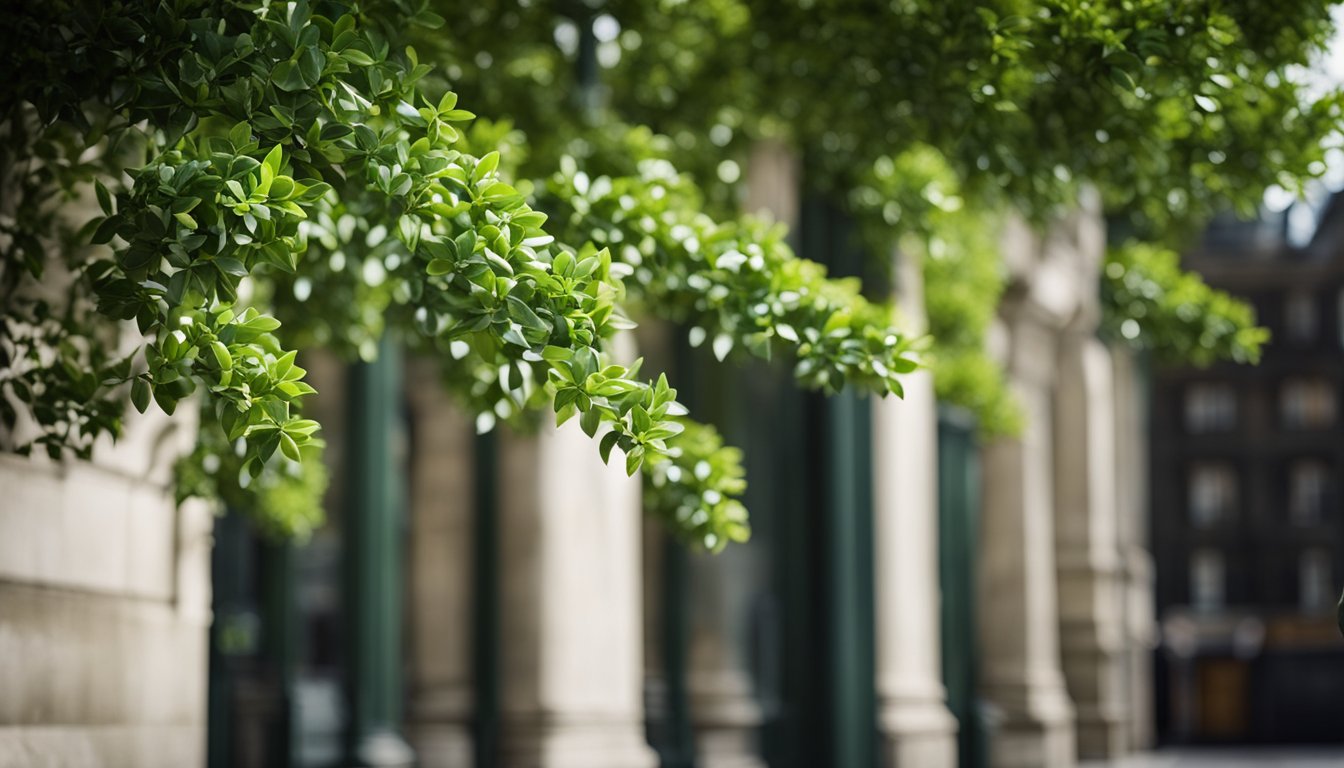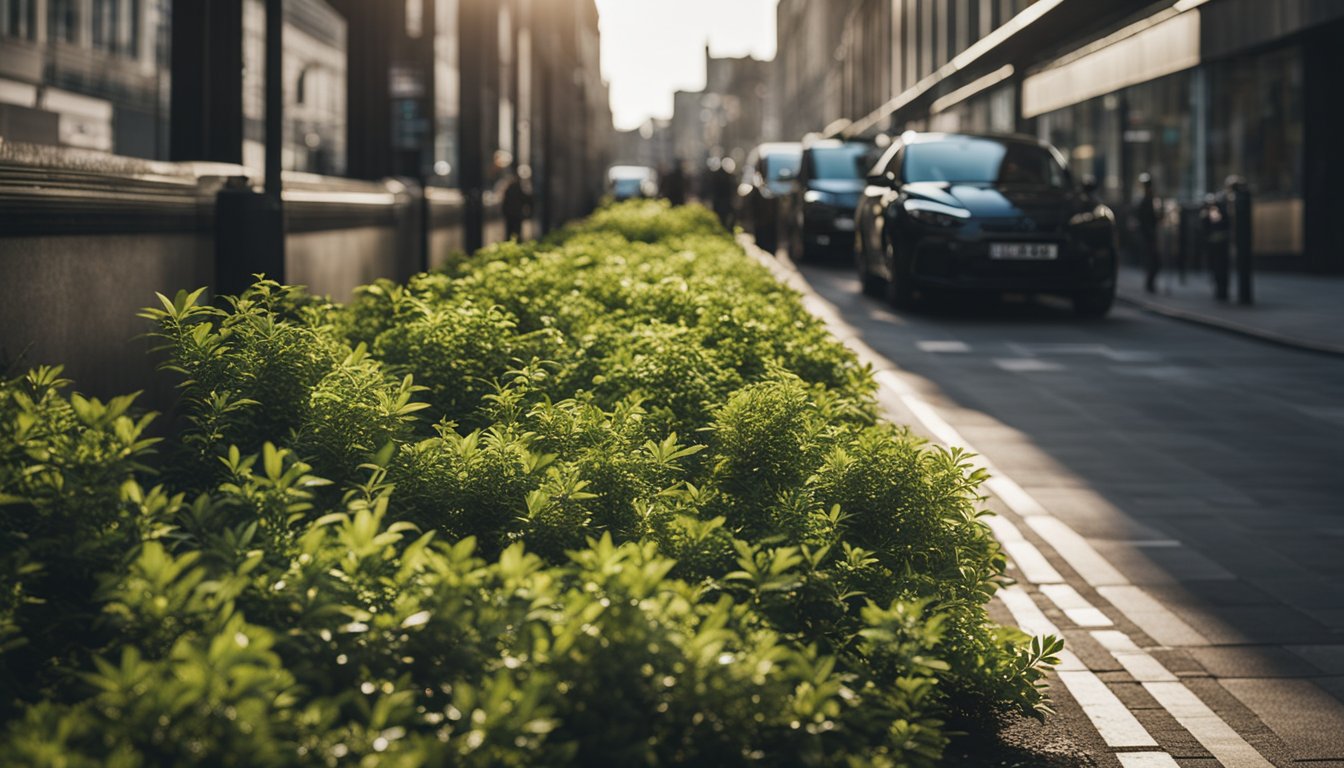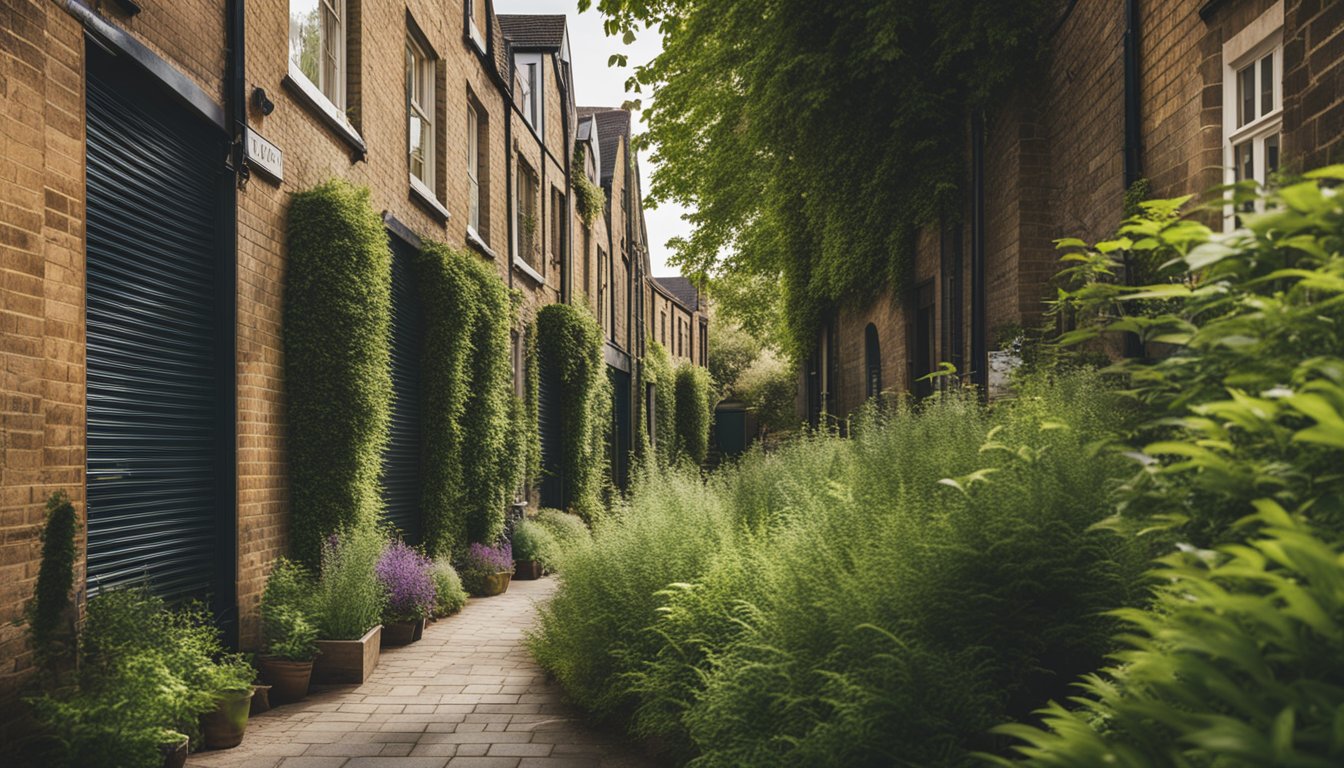Late updated: 28 Apr 2025 11:04
Written by: Emily Thornton
Native UK Shrubs That Thrive In Urban Shade: Top Picks for Low-Light Gardens
Urban gardening presents its own unique set of challenges, especially when dealing with shaded areas. For gardeners in the UK, native shrubs offer a promising solution to this problem. They are well-suited to urban environments, often thrive in low-light conditions, and contribute positively to local biodiversity. By selecting shrubs like holly, hazel, or dogwood, which can flourish in shaded spaces, we can create vibrant urban landscapes that enhance both beauty and ecological health.

Urban shade gardening with native shrubs not only supports local wildlife but also adds an element of resilience to city gardens. Native species are adapted to the local climate and soil conditions, reducing the need for extensive maintenance or special treatment. These plants can transform often neglected areas into thriving green spaces, allowing us to utilise every inch of our gardens effectively.
Let's explore how integrating these hardy shrubs into our city gardens can optimise under-utilised shaded spots. As we delve into this captivating juxtaposition of urban living and natural heritage, we discover how simple choices can have a lasting impact on our environment and beyond.
Key Takeaways
- Urban gardens benefit from shade-tolerant, native shrubs.
- Selecting suitable plants enhances biodiversity and resilience.
- Simple adjustments maximise the potential of urban spaces.
Key Native UK Shrubs For Urban Shade

Native UK shrubs bring vibrant life to our urban spaces, especially in shaded areas. By choosing plants like Holly, Mahonia, Hawthorn, and Dogwood, we can enhance local biodiversity. Each of these woody plants adapts well to less sunny environments while supporting local fauna with nectar, berries, and dense foliage.
Holly (Ilex aquifolium)
Holly is an iconic evergreen shrub that thrives in urban shade. This native plant offers glossy, spiky leaves that remain vibrant year-round, providing excellent cover for wildlife. In autumn, its bright red berries serve as an important food source for birds, enhancing biodiversity.
Holly is hardy and resistant to pollution, making it ideal for city gardens. It's adaptable to various soil types, ensuring it can flourish in different shaded environments. Additionally, it's deer resistant and can be pruned into hedges, offering privacy and ornamental appeal.
Mahonia And Its Varieties
Mahonia, with its spiky leaves and clusters of yellow flowers, is a standout in shaded urban areas. Its varieties, such as Mahonia aquifolium, are acclaimed for resilience and decorative charm. The flowers bloom in late winter or early spring, providing an early source of nectar for pollinators.
Mahonia's leathery foliage adds texture and depth to shaded spots. It adapts well to poor soils and urban pollution, making it a valuable addition to city landscapes. As one of the few winter-blooming plants, it extends the flowering season, supporting biodiversity even in colder months.
Hawthorn (Crataegus monogyna)
Hawthorn is a versatile native shrub, perfect for urban shade. Known for its springtime display of fragrant white flowers, it attracts bees and other pollinators. As autumn arrives, the plant bears red haws, serving as a food source for birds and small mammals, promoting ecological richness.
This woody plant tolerates poor soil and urban pollution, ensuring it thrives in our cities. Its dense growth offers shelter for wildlife, adding value to any shaded garden. Easy to maintain, Hawthorn can be pruned to fit various spaces, offering a natural hedge or standalone feature.
Dogwood (Cornus sanguinea)
Dogwood stands out with its distinctive red stems, providing colour during the winter months. In shaded areas, its foliage turns a vibrant reddish-purple in autumn, adding seasonal interest. It supports biodiversity by offering nectar-rich flowers in spring, attracting bees and butterflies.
The hardy nature of Dogwood makes it a reliable choice for urban settings. Its tolerance of different soil conditions and moderate shade allows it to adapt well to city gardens. As a native shrub, it fits seamlessly into local ecosystems, bolstering both beauty and biodiversity.
Optimising Urban Shade Gardens With Native Shrubs

Enhancing urban shade gardens with native shrubs can transform these spaces into lush, biodiversity-rich areas. By carefully selecting suitable plants, supporting local wildlife, and maintaining proper shrub care, we can create vibrant and sustainable green environments.
Selecting And Planting For Shade
In urban gardens, choosing the right native shrubs is crucial for areas with varying shade conditions, such as dappled to deep shade. Plants like the Common Hawthorn (Crataegus monogyna) and Dogwood (Cornus sanguinea) thrive in partial shade, providing striking seasonal interest.
It’s essential to assess the light levels and soil conditions, aiming for well-drained soil to ensure healthy growth. Hedges and deciduous hedge species are ideal for creating borders or privacy screens in shaded areas. Plant these shrubs in early spring or autumn to give them time to establish roots before extreme weather hits.
Supporting Wildlife And Urban Biodiversity
Native shrubs play a vital role in urban biodiversity, offering habitat and food sources for various wildlife. We should prioritise plants that produce nectar, berries, and shelter. For example, Hazel (Corylus avellana) supports caterpillars and provides nuts for birds.
In addition to boosting biodiversity, these plants can help improve air quality by filtering pollutants. Incorporating both deciduous and evergreen trees into the garden design increases habitat diversity and creates year-round interest, benefiting myriad urban species.
Shrub Maintenance And Pruning Advice
Pruning and maintaining native shrubs are essential for controlling growth and ensuring health. Regular trimming promotes bushier growth and removes dead or diseased wood. It's important to understand the specific needs of each shrub, as the timing and technique of pruning can vary greatly.
For instance, deciduous trees should be pruned in late winter or early spring before new growth starts, while evergreen trees might require minimal maintenance. Monitoring growth rate and adjusting care routines accordingly will keep shrubs healthy in different urban conditions, such as coastal gardens or polluted areas.
Regular care ensures the long-term success of our urban shade gardens.
Frequently Asked Questions

Exploring native UK shrubs that thrive in urban shade presents a wealth of options. These plants are uniquely adapted to limited sunlight, offering both ecological and aesthetic benefits to city environments.
What are some robust evergreen shrubs suitable for shaded urban gardens in the UK?
For shaded urban gardens, Aucuba japonica 'Crotonifolia' is a standout. With its glossy green leaves speckled with yellow, it maintains year-round interest and brightens any shady spot. Hollies, with their evergreen leaves and seasonal berries, are another excellent choice for adding structure and colour throughout the year.
Which tall native UK shrubs can prosper in shaded areas within city environments?
The English oak, offering abundant shade and support for diverse species, is often a top pick. Hawthorns are also suitable; their adaptability to shade and resilience in urban settings make them valuable for taller plantings.
Can you list low-maintenance native UK shrubs that are well adapted to urban shade?
Native shrubs like the common box (Buxus sempervirens) and the hardy 'Spindle Tree' (Euonymus europaeus) require minimal care once established. These shrubs are perfect for those seeking easy-to-care-for plants that thrive in shaded areas.
What small indigenous shrubs are recommended for growing in shaded and compact urban UK spaces?
Daphne laureola is ideal for compact spaces, offering fragrant blooms and evergreen leaves suited for shaded corners. The wild privet (Ligustrum vulgare) is another compact option, which can tolerate shade and requires little pruning.
Which native UK plant varieties are ideal for growth on north facing walls with little sunlight?
Plants such as ivy (Hedera helix) perform well on north-facing walls. Their ability to cling to vertical surfaces makes them invaluable for limited sunlight areas, adding greenery without requiring direct light.
Are there any fast-growing ground covers native to the UK that thrive in shaded conditions?
Wild garlic (Allium ursinum), with its lush green leaves and white flowers, is a rapid grower well-suited to shade. Wood sorrel (Oxalis acetosella) is another fast-spreading native option, thriving in damp, shady environments. Both provide excellent coverage while enhancing biodiversity.
